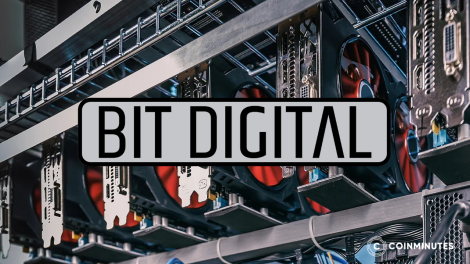What Is Proof of Stake? Discover How It Works And Its Main Types

You know about Bitcoin and its noisy, power-guzzling Proof of Work system. It burns a huge amount of energy every day, all to solve a puzzle and add a block to the chain. Then the developers decided there had to be a better way. And voilà, Proof of Stake (PoS) started to take shape. It’s a different beast altogether, a different philosophy for how these decentralized digital ledgers should agree on what’s what. This isn't about who has the biggest, baddest computer rig. This is about who’s willing to put their own money on the line.
What Is Proof of Stake (PoS)?
Proof of Stake is a consensus mechanism. That’s a fancy term for a system that lets a decentralized network agree on something. In crypto, it’s how the network agrees on which transactions are legitimate and in what order they happened. It’s the rulebook that keeps everyone honest without needing a boss.
In a PoS system, the role of "miners" is replaced by "validators."
-
Miners (in Proof of Work) prove their legitimacy by spending electricity.
-
Validators (in Proof of Stake) prove their legitimacy by locking up, or "staking," a significant amount of the network's own cryptocurrency.
This staked cryptocurrency acts as collateral. It’s a security deposit. By staking their coins, validators are making a bet on the network's success and promising to play by the rules. If they do their job correctly, they get rewarded with more coins. If they try to cheat the system, the network can destroy a portion of their staked coins. This penalty is known as "slashing".
How Does Proof of Stake Work?
The process is more elegant than the brute-force race of Proof of Work. There are no puzzles to solve. It’s more like a lottery where the odds are weighted in your favor the more tickets you own.
A user stakes their coins: A person who wants to be a validator finds a blockchain that uses PoS. They acquire the network's native cryptocurrency. They then lock up a required minimum amount of those coins in a special contract. For Ethereum, for example, you need to stake 32 ETH to become a solo validator. The stake is now collateral. It can't be moved or spent.
The network selects a validator: The PoS protocol runs an algorithm to select who gets to create the next block. This isn't just a simple lottery based on stake size. Most modern systems use a mix of factors, including the size of the stake and a degree of randomization, to prevent the wealthiest stakers from dominating the network completely.
The validator proposes a block: The chosen validator gathers transactions from the network's memory pool, checks that they are valid, and bundles them into a new block. They then broadcast this block to the rest of the network.

Other validators attest to the block: Other validators on the network check the proposed block. If it looks good—if the transactions are valid and the block is structured correctly—they "attest" to its validity. Once enough attestations are gathered, the block is considered final and added to the chain.
The validator gets paid (or punished): For their work, the validator who created the block receives a reward. The validators who attested also get a small reward. This is how stakers earn a yield on their locked-up coins. But if a validator proposes a bad block or goes offline when they're supposed to be working, the network's slashing mechanism kicks in, and they lose a portion of their stake.
It’s a system of carrots and sticks. The carrot is the staking reward. The stick is the slashing penalty. The entire system runs on this simple economic pressure. The folks at CoinMinutes have seen this model play out as networks like Ethereum made the switch—the entire economic foundation of the network changed overnight.
Main Types of Proof of Stake Protocols
Proof of Stake isn't a one-size-fits-all shirt. It’s more like a rack of jackets in different styles, each tailored for a slightly different purpose or with different ideas about how validators should be chosen and how the network should run. The crypto world is full of tinkerers, so new variations are always popping up. But here are some of the main cuts you'll see swaggering around the blockchain block. You can often find detailed explanations of how these protocols work on specific project websites or crypto education platforms that CoinMinutes might link to.
Classic Proof of Stake (Pure PoS)
This is the original, basic model. The selection process for choosing the next block validator is a simple, randomized lottery where your probability of being chosen is directly proportional to the number of coins you have staked. You stake 1% of the total coins, you have a 1% chance of creating the next block. It’s straightforward but can lead to the very wealthy having a significant advantage.
Delegated Proof of Stake (DPoS)
DPoS changes the game. Instead of everyone being a potential validator, coin holders use their stake to vote for a small, fixed number of "delegates" or "witnesses." These elected delegates are the ones who actually run the network—validating transactions and creating blocks. (Examples: EOS, Tron, Lisk)
- Only these elected delegates are responsible for creating and validating blocks.
- The delegates then share a portion of their earnings with the users who voted for them.
- This system is generally much faster and more efficient because there are fewer nodes that need to reach a consensus.
- The downside: It is inherently more centralized. Power is concentrated in the hands of a few dozen elected delegates. If they collude, they can control the network. Blockchains like EOS and Tron use this model.
Nominated Proof of Stake (NPoS)
This is a more nuanced model, used by networks like Polkadot. It works with two roles:
-
Validators: They run the nodes, create the blocks, and do the technical work.
-
Nominators: These are regular coin holders who want to participate. They "nominate" one or more validators they trust by bonding their own stake to them.
This system creates a bond of shared risk. If the chosen validator behaves well, both the validator and their nominators receive a share of the rewards. If the validator misbehaves and gets slashed, their nominators also lose a portion of their staked funds. This encourages nominators to do their homework and only back reputable validators.
Liquid Proof of Stake (LPoS)
This is a clever financial innovation on top of PoS. Traditionally, when you stake your coins, they are locked and illiquid. You can't use them for anything else. Liquid staking protocols solve this. When you stake your coins (e.g., ETH) through a liquid staking provider (like Lido or Rocket Pool), you receive a new token in return (e.g., stETH).
-
This new token is a "liquid staking token." It represents your claim on your original staked coins and any rewards they generate.
-
You can then take this liquid token and use it elsewhere in the world of Decentralized Finance (DeFi)—lend it, borrow against it, provide liquidity—all while your original stake continues to earn rewards.
-
This makes staking much more capital-efficient. It’s a game-changer that has exploded in popularity.
Other Variants
The innovation doesn't stop there. The crypto space is a bubbling cauldron of experimentation. You'll find other PoS variations, often hybrids or refinements of the above:
-
Proof of Stake Velocity (PoSV): Tries to incentivize active use of coins rather than just hoarding.
-
Proof of Credit (PoC): Where credit or reputation influences selection.
-
Hybrid PoW/PoS Systems: Some older coins used a combination of both Proof of Work and Proof of Stake, perhaps for different phases of coin issuance or for different security aspects.
Benefits of Proof of Stake
So, why all the fuss about Proof of Stake? Why did Ethereum, the big kahuna of smart contract platforms, go through the Herculean effort of switching from PoW to PoS? It’s not just because the tech crowd loves shiny new toys—though there’s plenty of that too. PoS comes with a list of potential advantages that have made it an attractive alternative, especially as the crypto world tries to address some of the criticisms leveled against earlier blockchain models.
Energy Efficiency
This is the big one. The headline grabber. The main reason your environmentally conscious cousin might finally stop giving you the stink-eye about your crypto habit. Proof of Stake systems are vastly more energy-efficient than Proof of Work systems.
PoW relies on an intense computational race. Miners worldwide run power-hungry hardware (like ASICs for Bitcoin) 24/7, consuming enormous amounts of electricity—comparable to entire countries in Bitcoin's case. This has led to significant environmental concerns.

PoS, on the other hand, doesn't require this massive computational effort. Validators are chosen based on their stake, not their processing power. While running a validator node still requires some electricity for the computer and internet connection, it's a tiny fraction of what PoW mining demands. Ethereum's move to PoS, for example, was estimated to reduce its energy consumption by around 99.95%. This makes PoS a much "greener" consensus mechanism.
Lower Barrier to Entry
In theory, PoS can make it easier for more people to participate in securing the network and earning rewards, compared to PoW on large, established chains.
For PoW chains like Bitcoin, effective mining now requires highly specialized and expensive ASIC hardware. This prices out most individuals and leads to mining power being concentrated in the hands of large operations with access to cheap electricity and capital for these machines.
In PoS, the primary requirement is owning the network's cryptocurrency. You don't need special hardware. While some networks have a high minimum stake (like Ethereum's 32 ETH), the rise of staking pools and liquid staking allows small holders to pool their funds and participate with any amount. This can make network participation more accessible to a wider range of people.
Scalability
Proof of Stake networks can often be designed to offer better scalability, meaning higher transaction throughput and potentially lower transaction fees compared to many traditional PoW chains.
PoW chains like Bitcoin have inherent limitations on block size and block creation time (e.g., Bitcoin's ~10-minute block time) which are part of their security model. This limits the number of transactions they can process.
Because block creation in PoS isn't tied to solving a computationally intensive puzzle that takes a specific average time, PoS chains can potentially have faster block times. This, combined with other architectural innovations often seen in newer PoS chains, can lead to significantly higher transaction processing capacity. This makes PoS networks potentially more suitable for applications that require high throughput, like DeFi platforms or blockchain-based gaming. For example, networks like Solana or Polygon boast very high TPS figures.
Decentralization
This one’s a bit more debated, and the outcome often depends on the specific implementation of PoS. However, PoS can offer pathways to greater decentralization in some aspects.
-
Reduced Hardware Centralization: As mentioned, PoS avoids the centralization pressures associated with specialized PoW mining hardware (ASIC manufacturing and large mining farms). Anyone with a sufficient stake and a decent computer can theoretically become a validator or participate via a staking pool.
-
Governance Participation: Many PoS projects allow token holders (stakers) to vote on protocol upgrades and changes. This creates a more democratic environment than some Proof-of-Work systems where miners and developers often have most of the power. Regular users now have more control over the network's future.
-
The "Rich Get Richer" Concern: This has always been a concern of PoS networks. People with large stakes are more likely to be chosen as validators and earn more rewards. Overtime, their stake and influence keep on increasing. This could potentially lead to wealth concentration and power centralization. Many modern PoS protocols try to mitigate this through various mechanisms, such as randomization in validator selection, stake caps, or progressive reward structures.
The Bottom Line
Proof of Stake is a fundamental shift in how blockchains are secured. It trades the physical costs of electricity and hardware for the economic costs of capital and risk. It's a quieter, cleaner, and often more efficient system. It’s the engine inside almost every new major blockchain being launched today.
Understanding this machine is key to understanding where the entire crypto space is headed. It’s less about digital brute force and more about economic chess. And the game is still in its early moves.
 English
English
 Vietnamese
Vietnamese
















